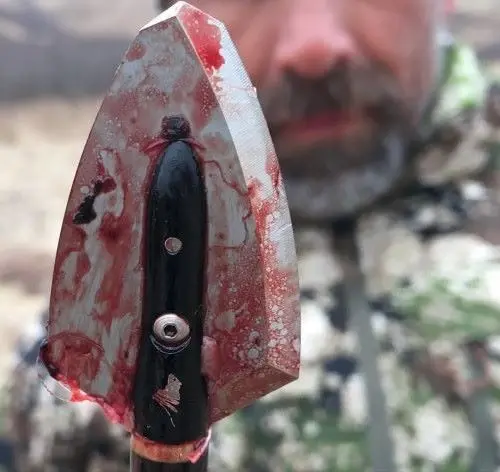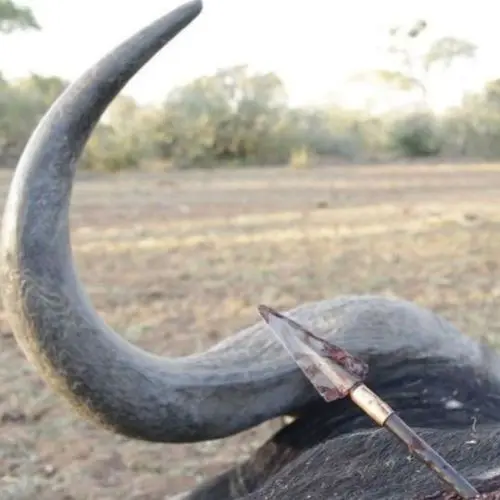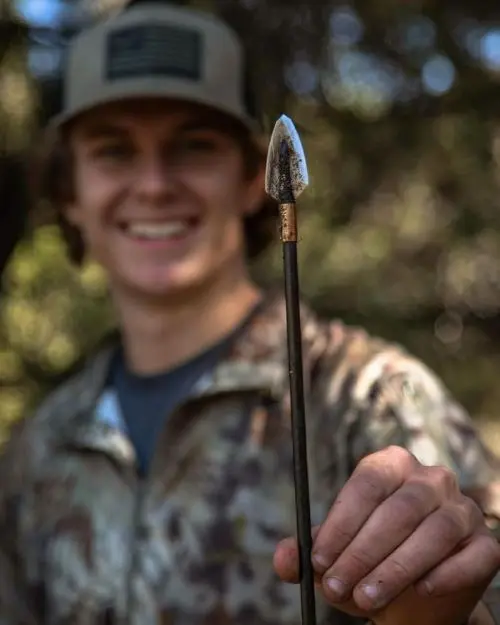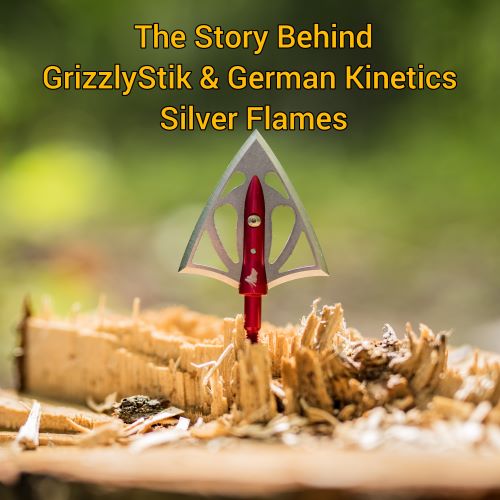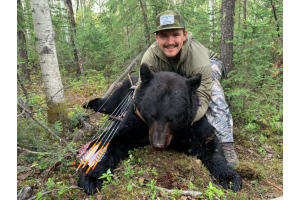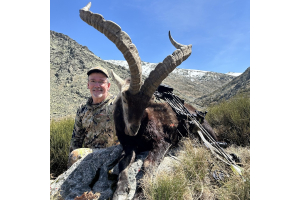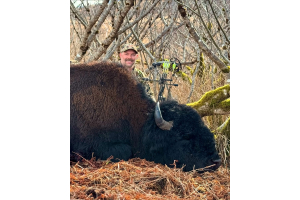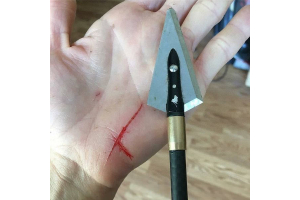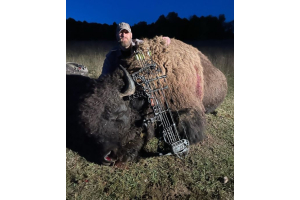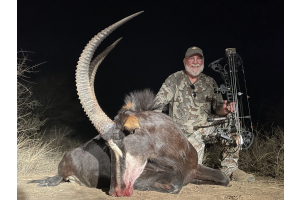Why GrizzlyStik and OverKill Broadheads Don't Have Bleeder Blades
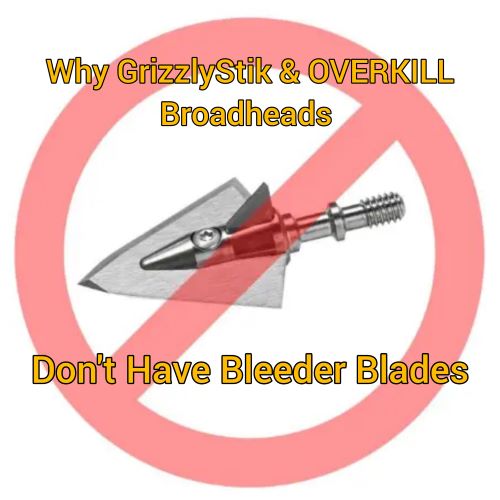
Why You Shouldn’t Shoot Broadheads with Bleeder Blades
Here we describe the effect that bleeder blades have on arrow penetration and arrow lethality in bowhunting and crossbow hunting big game.
Broadheads and broadhead designs are a hot topic with bowhunters. You’re never going to get everyone to agree on whether mechanical or fixed blade cut-on-contact broadheads are the best choice for the highest likelihood of consistent, quick clean kills on big game. (Hint: That one’s easy – Cut-On-Contact broadheads!)
Even if you find a group of bowhunters who agree that rigid, fixed-blade, cut-on-contact single-bevel, or double-bevel broadheads are the best way to go for the most reliable lethal arrow penetration - one thing that seems to drive a wedge between them is the topic of bleeder blades in broadheads.

What is a bleeder blade?
Bleeder blades, also known as auxiliary blades, are secondary cutting surfaces added to some 2-blade broadhead designs. Adding a bleeder blade to a 2-blade broadhead changes it to a 4-blade broadhead.
These bleeder blades are typically smaller than the main broadhead blade and positioned anywhere from the middle of the main blade to the rearward end of the main blade.
What do you gain by hunting with broadheads that have bleeder blades?
Bleeder blades intend to create larger wound channels and to increase the chances of hitting vital organs as an arrow penetrates an animal.
On the surface, it sounds pretty good. But at what cost?
How do arrows kill big game?
Arrows kill by disrupting the blood flow, which ultimately cuts off the oxygen supply to the body and brain, resulting in death.
Yes, they can also sever the spine or be driven into the brain – but for the sake of argument, we need to agree that by far and away, the way that broadheads driven by arrows kill, is by disrupting the vascular system and causing massive blood loss.
Why you shouldn’t shoot broadheads with bleeder blades.
At first glance, bleeder blades seem to make sense but in the long run, they are a poor choice if quick clean kills in all situations are your goal.
Intensive testing has shown that 2-blade cut-on-contact fixed-blade single-bevel and double bevel broadheads outperform and out penetrate all other types of broadheads.
The Problem with Bleeder Blades:
Fewer Pass-Throughs
Bowhunters want their arrows to fully pass through big game animals every time. When you have both an entrance wound and an exit wound, you put more blood on the ground for quicker kills and easier animal recovery. The bigger and better the blood trail, the easier it is to recover your animal.
4-blade broadheads do cut more as they travel forward, but the additional friction caused by the bleeder blades wastes much more of the arrow’s energy during the penetration process, and too often, they run out of gas before the arrow can create an exit wound. Not good.
Two-blade broadheads will give you the highest likelihood of complete pass-throughs – even if you hit bone.
Bone Hits Defeat Them
When broadheads with bleeder blades hit bone, the bleeders REALLY put on the brakes. It’s MUCH MORE DIFFICULT for a 4-blade broadhead to make it through bone than it is for efficient 2-blade broadheads.
On bone hits, and it happens more often than most bowhunters care to admit, broadheads with bleeder blades are NOT A GOOD CHOICE.
In contrast…
When a 2-blade double-bevel broadhead hits bone, it cuts its way through the bone. When driven by a good heavy arrow, they punch through bone and keep cutting as they continue through the animal.
When a 2-blade single-bevel broadhead hits bone, it cracks and splits the bone and keeps right on going.
When driven by a good heavy arrow, it rotates as it penetrates and this powerful rotational force splits and cracks bone. Once the bone is defeated, the friction on the arrow and broadhead is all but eliminated and the arrow continues on its flight path – driving through the vitals and out the other side of the animal.
Risk of Blade Deflection
Bleeder blades can increase the risk of blade deflection upon impact with bone or tough tissue. This deflection can divert the arrow's path away from vital organs, potentially leading to non-fatal hits and extended tracking efforts.
More Difficult to Tune
Broadheads with bleeder blades cause more turbulence at the front of the arrow and this commonly causes arrow tuning issues. If your arrow isn’t flying well upon impact, your penetration will suffer greatly. Not good.
For best results, we know that we want full pass-through performance when we can get it. Without perfect arrow flight, that’s a challenge.
We have found that 2-blade broadheads are easy to tune and when your arrows are flying straight and true, you’ll get the deepest penetration possible in all situations.
More Difficult to Sharpen
When it comes to sharpening and re-sharpening broadheads, 4-blade broadheads with bleeders are much more difficult to get sharp.
Broadheads with bleeder blades are significantly more difficult to sharpen. Since very few broadheads are hair-shaving sharp right from the package, it’s on you to get the main blades and the bleeder blades sharp enough to ethically hunt with them. It’s not easy to accomplish this. It can be done, but you’re going to have to work at it.
You always want to hunt with only razor-sharp broadheads, the animals deserve it.
2-blade double bevel and single bevel broadheads are straightforward to sharpen and re-sharpen.
When you’re deciding on what broadhead you’re going to hunt with in any given season, be sure to choose one that comes hunting-sharp right from the package, and one that is easy to re-sharpen.
GrizzlyStik and OVERKILL broadheads are hunting sharp right out of the package - they are ready to hunt as soon as you get them.
Stay Away from 4-Blade Broadheads and Broadheads with Bleeder Blades
While bleeder blades may sound like a good idea at first, they don’t come close to the efficiency and effectiveness of 2-blade single bevel and double-bevel broadheads.
Hunt Only with 2-blade Single Bevel or Double-Bevel Broadheads
When it comes to achieving deep, lethal, and humane penetration, opt for quality, razor-sharp single-bevel, and double-bevel fixed blade broadheads.
Go with GrizzlyStik and OverKill Single-Bevel and Double-Bevel Broadheads
Dr. Ed Ashby's research as well as the success our customers have had in the field on virtually any big game throughout the world is why we recommend that you use our GrizzlyStik or OVERKILL broadheads for all of your big game bowhunting.
Our broadheads are:
- tempered tough for structural integrity you can count on.
- spin-tested before being packaged. They’re easy to tune and fly great.
- hair-shaving sharp right from the package and they’re easy to re-sharpen.
- guaranteed against damage for a full year!
Our broadheads are effective on ALL BIG GAME ANIMALS. Just ask our customers. They’ve experienced it firsthand.

